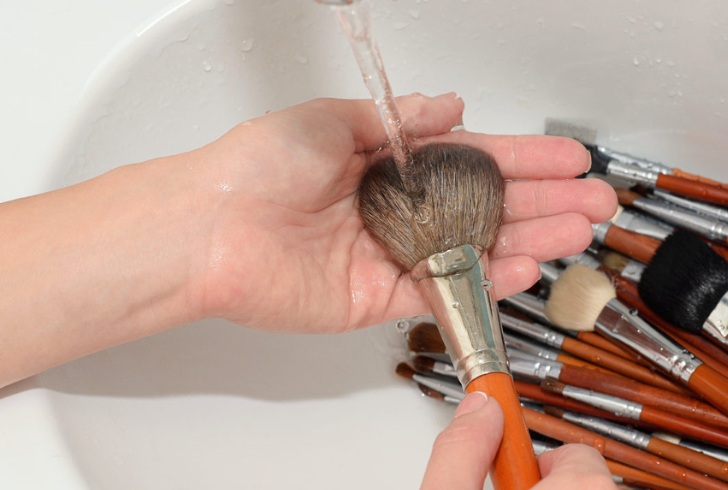Keeping makeup brushes and sponges clean is essential for maintaining healthy skin and ensuring optimal makeup application. Regular cleaning prevents buildup of dirt, oil, and bacteria, which can lead to skin issues like breakouts or infections. This guide offers detailed steps on how to clean makeup brushes and sponges effectively, ensuring they remain in top condition and free from harmful contaminants.
Why Clean Your Brushes and Sponges?
Makeup tools are magnets for product residue, dirt, and oil. Without regular cleaning, they can become breeding grounds for bacteria. This not only affects the effectiveness of your makeup but can also cause various skin problems such as acne and rashes. In severe cases, dirty brushes and sponges can lead to infections, including fungal or bacterial infections like E. coli or staph.
The Best Practices for How to Clean Makeup Brushes and Sponges
1. Start with Rinsing

Begin by rinsing the tips of your brushes and sponges under lukewarm running water. It's important to only wet the bristles or sponge tips. Submerging the entire brush or sponge can loosen the glue holding the brush head to the handle or damage the sponge’s structure.
2. Prepare Your Cleaning Solution
Fill a bowl with lukewarm water and add a tablespoon of gentle or clarifying shampoo. Avoid using regular soap, as it can dry out the bristles and affect the brush’s performance. The shampoo will help break down the makeup residue and clean the bristles effectively.
3. Clean the Brushes and Sponges
Swirl the tips of your brushes in the bowl to loosen and remove the makeup. For a deeper clean, gently massage the bristles or sponge in the palm of your hand. This action helps create a lather and ensures that all the makeup and impurities are removed.
4. Rinse Thoroughly
Rinse each brush and sponge under running water until the water runs clear. It’s crucial to remove all the shampoo and residue to prevent any buildup or residue that might affect the next use.
5. Drying
Gently squeeze out excess water using a clean, dry paper towel. Lay the brushes flat on a towel with the tips hanging off the edge of a counter or table. This method ensures that water doesn’t seep into the handle, which can weaken the glue and cause the bristles to fall out. For sponges, simply lay them flat on a towel to dry.
Additional Tips for Brush and Sponge Maintenance

- Frequency of Cleaning - Aim to clean your makeup brushes and sponges every 7 to 10 days. Regular cleaning helps prevent the buildup of bacteria and ensures your tools remain in good condition.
- Avoid Sharing - Refrain from sharing your brushes and sponges with others. Sharing can transfer bacteria and germs, increasing the risk of skin infections.
- Check for Wear and Tear - Regularly inspect your brushes and sponges for signs of damage or wear. Replace them if they become too worn out or damaged to ensure effective and hygienic use.
Maintaining clean makeup brushes and sponges is not just about keeping your tools in good shape—it’s crucial for your skin health. Regular cleaning helps avoid the buildup of bacteria and ensures that your makeup application is flawless and hygienic.
By following these straightforward steps on how to clean makeup brushes and sponges, you can protect your skin and make your beauty routine both effective and enjoyable.






